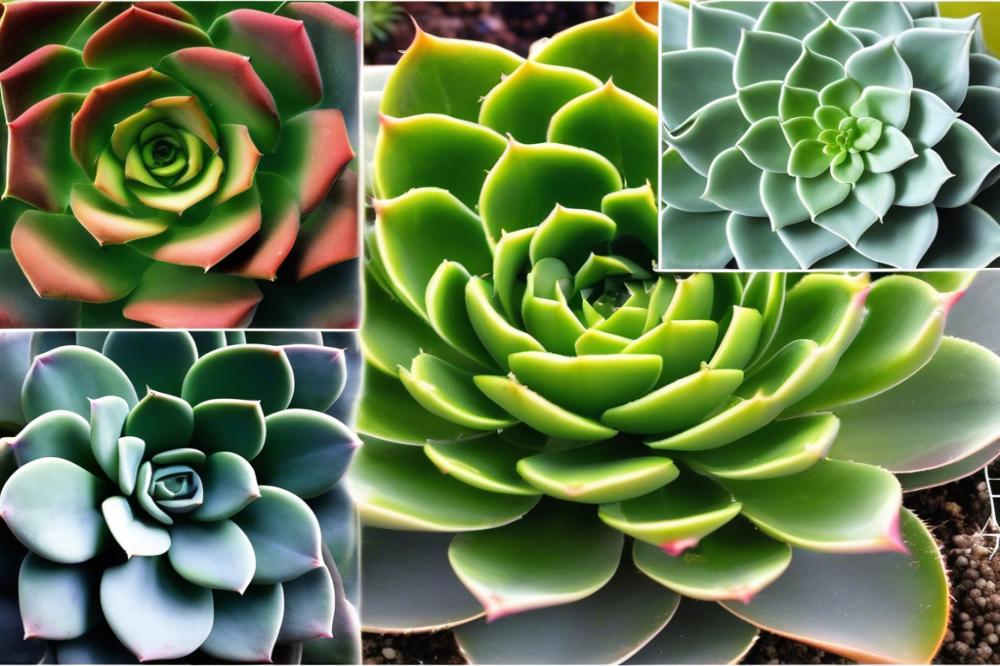Importance of nutrient balance for Succulent Health
Maintaining nutrient balance in soil is crucial for the health and vitality of succulents. These unique plants, known for their ability to store water, also require specific fertilizers-improve-soil-structure-and-nutrient-availability”>plant nutrients for growth. Without the proper nutrients, succulents can suffer from stunted growth or discoloration. A healthy plant is one that has access to appropriate amounts of nitrogen, phosphorus, and potassium.
fertilizers play an important role in gardening, particularly for growing succulents. They provide essential nutrients that may be lacking in the soil. Different types of fertilizers are available, ranging from organic options to synthetic varieties. Organic fertilizers are typically derived from natural sources and can improve soil structure over time. In contrast, chemical fertilizers offer a quicker nutrient boost but may affect pH levels in the soil. Choosing the right fertilizer type depends on the specific needs of your plants.
Indoor gardening has become increasingly popular, and succulent care is at the forefront of this trend. Growing plants inside has unique challenges, such as limited light and variations in humidity. It’s vital to adapt your care routine to meet these conditions. Properly monitoring watering tips and ensuring the right soil requirements can make a significant difference. Succulents thrive in well-draining soil that allows excess moisture to escape. For indoor growers, slow-release fertilizers can simplify the feeding process, making it easier to maintain nutrient balance over time.
Understanding the NPK ratio on fertilizer labels can guide you in selecting the best product. This ratio indicates the percentages of nitrogen, phosphorus, and potassium present in the fertilizer. Achieving the right balance fosters strong, healthy plants that flourish indoors and outdoors alike. With some attention to detail, anyone can successfully nurture their succulents, keeping them vibrant and thriving.
Understanding plant nutrients


Succulents require several essential nutrients to thrive. These nutrients enable them to grow robustly and remain healthy in their unique environments. The two main categories of nutrients are macro and micronutrients. Macro elements are needed in larger quantities, while micronutrients are required in smaller amounts.
Overview of Essential Nutrients for Succulents
Nitrogen, phosphorus, and potassium are the primary macronutrients represented in many fertilizer types. These are often referred to by the acronym NPK, where each letter stands for one of the vital elements. Nitrogen plays a crucial role in leaf growth, while phosphorus aids in root development. Potassium is necessary for overall plant health. Without these nutrients, succulents may suffer from stunted growth or other issues.
Micronutrients, though needed in smaller amounts, are equally important. Iron, manganese, and zinc contribute to various plant functions. For example, iron is essential for chlorophyll production, and a deficiency can lead to yellowing leaves. These nutrients often come from organic fertilizers, which some gardeners prefer for succulent care.
Importance of a Balanced Nutrient Supply for Growth
A balanced nutrient supply is vital for healthy growth. If a plant lacks certain nutrients, it will not perform well. Succulents have specific soil requirements that support their growth and nutrient absorption. When choosing fertilizers, consider those with a slow-release formula, as they provide a steady supply over time. This helps prevent nutrient spikes that can harm the plants.
Additionally, pH levels in the soil impact how well nutrients are absorbed. Acidic or alkaline conditions can hinder nutrient availability. Therefore, maintaining the right pH is crucial for effective nutrient use. Understanding these factors can enhance your indoor gardening experience and promote the well-being of your succulents.
When watering, keep in mind that succulents do not need frequent applications. Overwatering can lead to nutrient leaching, which diminishes nutrient levels in the soil. Use watering tips that focus on moisture levels and timing instead of a strict schedule. With careful attention to plant nutrition, your succulents can flourish beautifully.
Types of Fertilizers for Succulents


Understanding the right type of fertilizer is essential for succulent care. Different fertilizer types cater to the unique needs of these plants. The primary options are organic and chemical fertilizers. Each of these categories has its own advantages and disadvantages.
Organic Fertilizers vs Chemical Fertilizers
Organic fertilizers are derived from natural sources. They include materials like compost, fish emulsion, and seaweed extract. These products enhance soil health and improve its structure, providing plant nutrients slowly over time. Chemical fertilizers, on the other hand, are synthesized in laboratories. They often contain higher concentrations of nutrients, which can lead to rapid growth. However, misuse of chemical options can harm soil life and affect pH levels.
Slow-Release Fertilizers and Their Benefits
Slow-release fertilizers gradually feed plants as they break down. They can provide a consistent supply of nutrients over several months, aligning well with succulent watering tips. This type of fertilizer minimizes the risk of over-fertilization and helps maintain a balanced nutrient profile. It benefits both indoor gardening and outdoor planting scenarios. Additionally, they reduce the frequency of fertilizing, which can be beneficial to busy gardeners.
Water-Soluble Fertilizers and When to Use Them
Water-soluble fertilizers dissolve in water, making them easy to apply. These fertilizers allow for quick absorption of nutrients, which is useful for succulents during the growing season. Using them every few weeks can promote healthy growth and vibrant colors. It is crucial to follow the NPK ratio recommended for specific plant types. While they provide immediate benefits, care must be taken not to overuse them, as they can alter soil requirements.
NPK Ratio Explained


The NPK ratio represents three essential plant nutrients: nitrogen (N), phosphorus (P), and potassium (K). Each nutrient plays a specific role in plant growth. Nitrogen is vital for leafy growth, phosphorus supports root and flower development, and potassium helps with overall plant health. When gardening with succulents, understanding this ratio is crucial for maintaining a balanced nutrient profile.
Ideal NPK ratios vary depending on the type of succulents you are growing. For example, many cacti perform well with a fertilizer that has a high potassium content, like a 2-7-5 ratio. Meanwhile, leafier succulents, such as jade plants, benefit from a balanced fertilizer, such as 10-10-10. Recognizing these needs is an important aspect of succulent care.
Choosing fertilizers based on the NPK ratio starts with assessing the specific requirements of your plants. It helps to read the labels carefully. Different fertilizer types cater to various growth phases of your succulents. When selecting, look for slow-release fertilizers if you prefer longer-lasting solutions. These options provide nutrients gradually, helping to stabilize pH levels in the soil.
Watering tips also play a role in this selection process. Overwatering can wash away nutrients in the soil, reducing the effectiveness of your chosen fertilizers. Therefore, it’s vital to establish proper soil requirements that complement your feeding schedule. Organic fertilizers can be a good alternative since they often contribute to soil health, benefiting your plants in the long term.
When managing indoor gardening, the proper NPK ratio is even more critical, as succulents receive limited natural nutrients. Regularly check the nutrient levels in the soil and adjust your fertilizer use accordingly. Being attentive will keep your succulents thriving in their environment.
Soil Requirements and Fertilizer Interaction


Choosing the right soil is fundamental for succulent health. Well-draining soil allows excess moisture to escape, preventing root rot. A mix that retains moisture, yet does not become waterlogged, is crucial. Various organic fertilizers can complement this type of soil, providing essential plant nutrients. Succulents typically thrive in soils with a porous structure.
Soil significantly influences nutrient availability. The soil’s texture, drainage properties, and pH levels can determine how well succulents absorb nutrients. A pH level between 6 and 7.5 is often preferable for these plants. This range ensures that essential nutrients remain accessible to the roots. Careful attention to soil composition helps avoid nutrient deficiencies.
For optimal growth, consider using specific soil mixtures. Combining potting soil with perlite or sand can enhance drainage. This unique mix prevents compacting, allowing roots to breathe. A commercial cactus mix is another excellent option if you’re starting with less experience. Many gardeners also recommend slow-release fertilizers for convenience and ease.
When you care for your succulents indoors, remember their environment affects growth. Proper watering tips involve checking the soil’s moisture. If it feels dry several inches down, it’s time to water. Pay attention to the fertilizer types you use and their NPK ratio. Succulents have different needs, so finding balance is key.
Experimenting with different soil mixtures helps gardeners find the best fit for their succulents. A blend of compost, sand, and potting mix often yields positive results. Adjustments can be made depending on the individual plant’s response. Understanding these soil requirements leads to healthier plants and more successful gardening experiences.
Watering Tips for Effective Fertilization
Best watering practices for fertilized succulents
Watering is crucial for the health of your succulents, especially after applying plant nutrients. A deep soak followed by a dry period works well. Consider using a watering can with a narrow spout to control the flow. The goal is to reach the roots without over-saturating the soil. Too much water can lead to root rot, which succulents are quite prone to. After fertilizing, it’s advisable to wait a week before watering again. This allows the plants to absorb the nutrients without dilution from excess moisture.
Signs of over-fertilization and under-fertilization
Recognizing the signs of over-fertilization is important for succulent care. Yellow or brown leaf tips often indicate a problem. These symptoms suggest that the plant is unable to absorb nutrients effectively. In contrast, under-fertilization can lead to slow growth or pale leaves. A lack of vigor is a clear warning sign that more nutrients are needed. If leaves begin dropping or shrinking, it could signal a nutrient imbalance or inadequate feeding. Observing your plants closely will help you take action before serious damage occurs.
Role of pH levels in nutrient absorption
pH levels in the soil can significantly affect how well plants absorb nutrients. A neutral range, ideally between 6.0 and 7.0, allows for optimal nutrient availability. Too high or too low a pH can lock out essential minerals, leading to deficiencies. Organic fertilizers often help maintain a balanced pH due to their natural composition. Soil requirements vary depending on the type of succulent, so testing the pH regularly is wise for indoor gardening. Use a soil testing kit to monitor these levels efficiently. Adjusting pH can be done with amendments like lime for high pH or sulfur for low pH. This simple care measure will aid in nutrient absorption and overall plant health.
General Tips for Succulent Care with Fertilizers
How to Incorporate Fertilizers into Your Succulent Care Routine
Fertilizers can play an important role in healthy growth. Start by selecting the right type based on your succulents’ needs. Organic fertilizers are often a popular choice for their natural ingredients. Mix the fertilizer with water as directed on the package. Watering tips are crucial when combining soil and nutrients. Apply this mixture during the growing season. Avoid using fertilizers on dry soil, as it can harm the plant.
Seasonal Fertilizing Tips
Different seasons require different approaches. During spring and summer, succulents are actively growing. This is the ideal time to provide nutrients. A balanced fertilizer with a suitable NPK ratio can enhance growth. In the fall, reduce the frequency of feeding. Succulents enter a dormant period, and their nutrient needs drop. Winter often sees very little fertilization. Observing your plants helps adjust your approach as needed.
Adjusting Nutrient Supply for Indoor Gardening versus Outdoor Gardening
Indoor gardening presents unique challenges. Light levels can influence nutrient uptake, so choose fertilizers wisely. Outdoor succulents generally benefit from more natural nutrients found in the soil. Ensure the right pH levels in the growing medium. Often, slow-release fertilizers work well in an outdoor garden. Indoor plants may need a more regular feeding schedule. Soil requirements also differ based on where the plants grow. Familiarize yourself with the specific needs of your succulents for the best results.
Final Thoughts on Nutrient Balance for Succulents
Maintaining a well-balanced nutrient profile is crucial for the health of succulents. These fascinating plants thrive in environments where nutrients are carefully managed. When balanced correctly, they can flourish, displaying vibrant colors and resilience. This balance can be challenging due to the various factors that influence their growth.
Exploring the different fertilizer types available can greatly benefit your gardening efforts. A wide range of options exists, from organic blends to synthetic solutions. Each has its unique advantages, depending on the specific needs of your plants. Trying out various products may help you find the perfect match for your succulents.
For achieving thriving greens, remember these tips. Use a balanced fertilizer that can provide essential plant nutrients. Pay attention to seasonality; plants have heightened needs during the growing season. Adjust your feeding schedule accordingly. Additionally, frequency is important; monthly applications during active growth can work wonders. Over-fertilizing should be avoided, as it can do more harm than good.
In summary, prioritizing nutrient balance will enhance the beauty and health of your succulents. With a bit of research and experimentation, you can discover what works best for your specific plants. Happy gardening!



